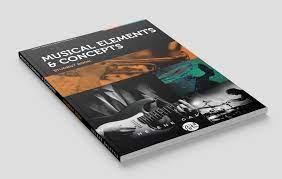Introduction:
Music has been an integral part of cultures across the globe for thousands of years, and it continues to evolve as modern artists experiment with new sounds and styles. At the heart of any musical composition, there are fundamental concepts and elements that provide a framework for understanding and creating music. This article aims to delve into these core components, including melody, rhythm, harmony, texture, form, and timbre.
Melody:
Melody is the series of single notes that create a memorable musical pattern, often considered the most recognizable aspect of a song. A melody can be simple or complex, conjuring emotions and evoking feelings in the listener. Composers strategically use techniques like repetition, variation, and phrasing to give melodies their unique identity.
Rhythm:
Rhythm is the recurring pattern of beats and sounds that propels a piece of music forward in time. It involves aspects such as tempo (the speed at which music is played), meter (the pattern of stressed and unstressed beats), and syncopation (accenting offbeats). Together, they dictate the overall groove of a song and contribute to its energy and mood.
Harmony:
Harmony refers to the simultaneous combination of different musical notes that provide support to a melody. These combinations – known as chords – create rich layers of sound that can evoke various emotions depending on their structure. Harmonic progressions (the order in which chords are played) give music direction by creating a sense of tension and resolution.
Texture:
Texture pertains to the overall quality created by combining various musical elements. Music can be classified as having different textures such as monophonic (a single melodic line without accompanying harmony), polyphonic (multiple melodic lines occurring simultaneously), homophonic (a main melody supported by chords), and heterophonic (two or more variations of a melody played together). By varying the texture, composers can create contrast and interest within their compositions.
Form:
Form represents the overall structure of music, which is crucial for guiding listeners through a piece. It shapes how musical ideas are presented, developed and resolved, providing context and continuity. From simple structures like AB (binary) or ABA (ternary) to more complex arrangements like sonata or rondo form, the organization of compositions plays a significant role in determining the piece’s overall impact.
Timbre:
Timbre, also referred to as tone color or tone quality, is the unique sound produced by an instrument or voice. Factors that influence timbre include the material, size, and shape of the instrument as well as an individual musician’s technique. Timbre allows listeners to distinguish between different instruments or voices and contributes significantly to the character of music.
Conclusion:
Understanding these musical concepts and elements serves not only as a foundation for appreciating and critiquing music but also as a basis for creating beautiful and meaningful compositions. By experimenting with melody, rhythm, harmony, texture, form, and timbre, artists can craft sonic landscapes that resonate with listeners on an emotional level – ultimately contributing to the enduring power of music throughout human history.





